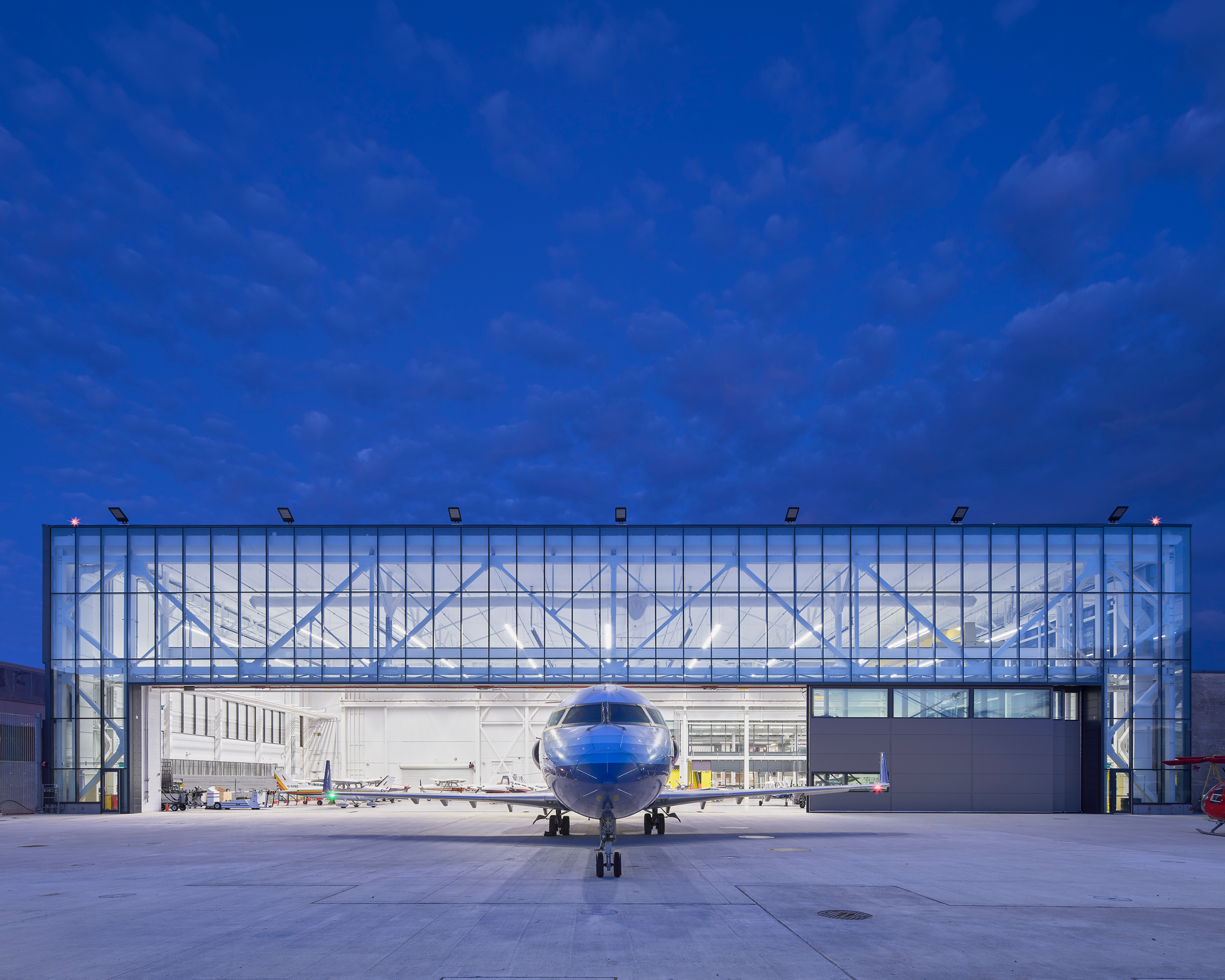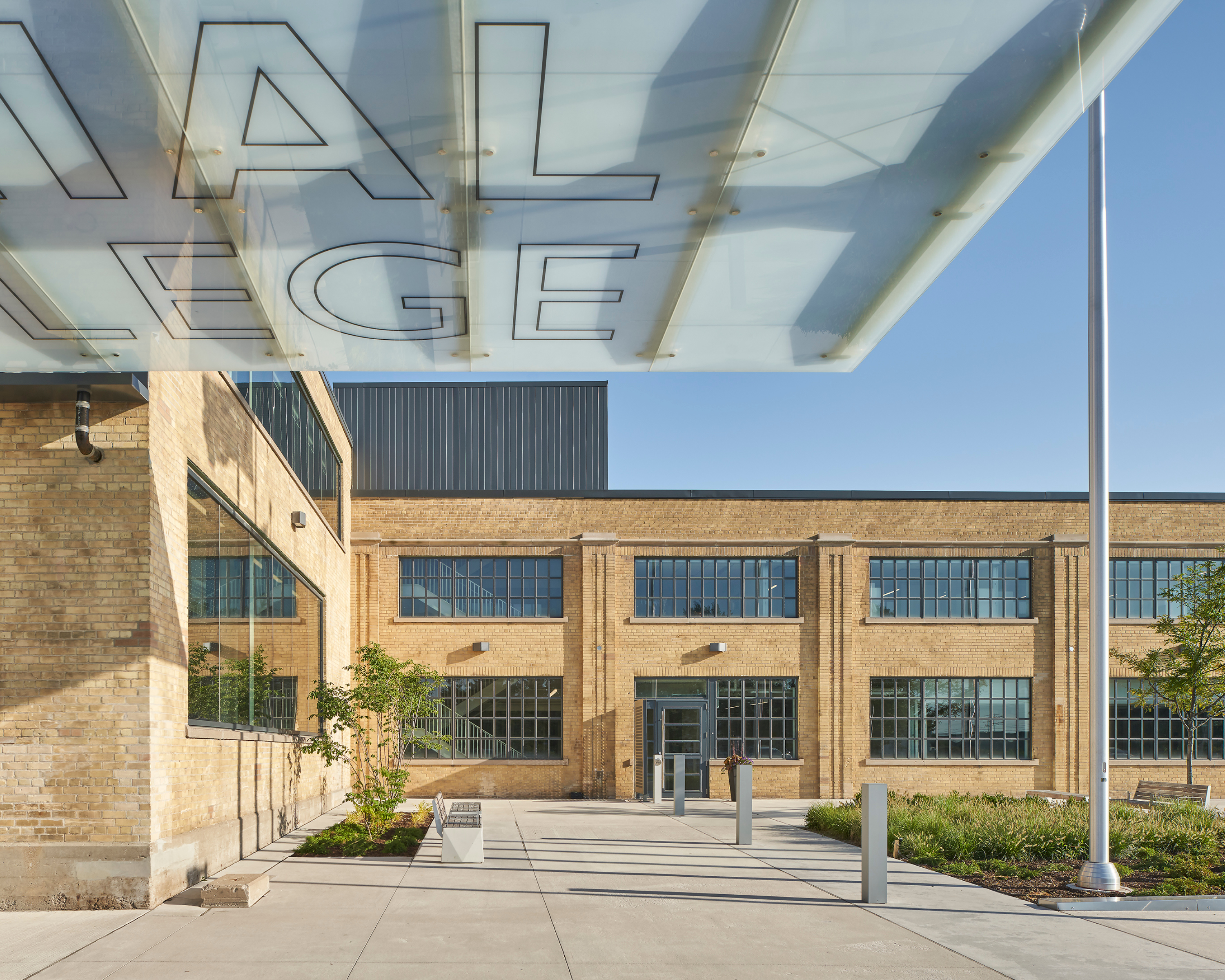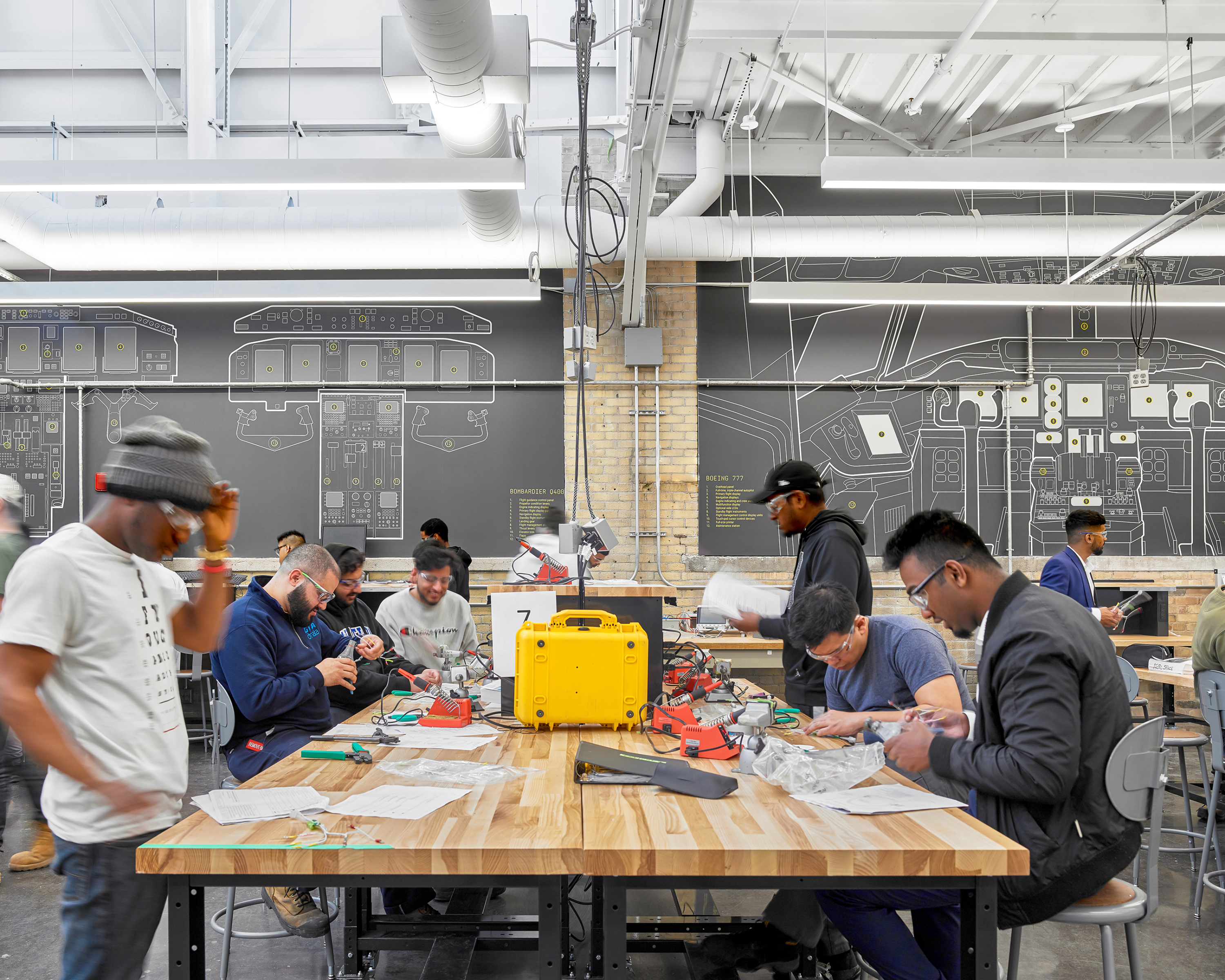Project Location: Toronto, Ontario
Project Architect(s): MacLennan Jaunkalns Miller Architects Ltd. in association with Stantec Architecture Ltd.
Project Owner(s): Centennial College
Project Completion Date: 2019/Apr/01
Building Gross Floor Area: 137,886 sq. ft.
Energy Use Intensity (EUI) (ekWh/m2/year) : 204 kWh/m2
Greenhouse Gas Intensity (GHGI) (tCO2e): -
This adaptive reuse houses the Aviation and Engineering Technology & Applied Science program at Centennial College’s Downsview campus on a site that was once Canada’s epicentre of aviation design and manufacturing. The College’s educational programs are housed inside the heritage structure and new extensions; the complex comprises two hangars, classrooms, admin offices, a library, and learning and fabrication spaces that include avionics, electronics, engines, and composite labs, and group study and collaborative zones. The new facility establishes a museum of artifacts with a collection drawn from the site’s storied past and exhibits conveying the history of Canadian aviation.
The project draws on the site’s layered heritage in various ways, engaging visitors in its history while encouraging new generations of students to pursue innovation in the aviation and aerospace sectors. New program spaces have been ‘curated’ into the existing fabric, allowing for the unique characteristics of the existing structure to affect program placement. Comprehensive environmental graphics throughout demonstrate the special features of the site and interweave its history into the daily life of the facility. The new campus also includes a museum to display site artifacts and convey information about the history of Canadian aviation to the public.

Site
The project draws on the site’s layered heritage in various ways, engaging visitors in its history while encouraging new generations of students to pursue innovation in the aviation and aerospace sectors. New program spaces have been ‘curated’ into the existing fabric, allowing for the unique characteristics of the existing structure to affect program placement. Comprehensive environmental graphics throughout demonstrate the special features of the site and interweave its history into the daily life of the facility. The new campus also includes a museum to display site artifacts and convey information about the history of Canadian aviation to the public.

Energy
Transforming this facility into an innovative learning institution was part of a larger holistic vision to support healthy community building that prioritizes densification, access to green space, and public transportation. The conservation measures involved extensive salvaging and restoration of existing heritage brick structures, helping reduce the project’s embodied carbon footprint. A client-driven energy efficiency mandate for the project was set at limiting the project’s EUI to 200kWh/m²a. The design team approached this challenge by initially addressing the building’s passive systems; implementing a high-performance envelope, natural daylighting, and a LED lighting system; then, implementing highly efficient active systems.
![]()
Community
Spaces for student activity are designed to achieve a maximum variety of experience types—from quiet study and small group rooms to social seating and lively table tennis. A range of privacy and/or openness enriches the student experience on campus. The public spaces aim to connect students not only with one another, but also with the Aerospace program and the essence of the building; they have been designed with optimal views into the primary Hangar, as well as into the labs and teaching spaces, connecting students to and furthering interest in the campus’s program offerings.

Project Team
Architect: MJMA / Stantec
Electrical: Crossey Engineering
Mechanical: Crossey Engineering
Civil: MTE
Structural: Blackwell Engineers
Lighting: Martin Conboy Lighting Design
Interiors: MJMA Architecture & Design + Stantec
Heritage: ERA Architects
Landscape: Stantec Consulting
Contractor: Bondfield Construction